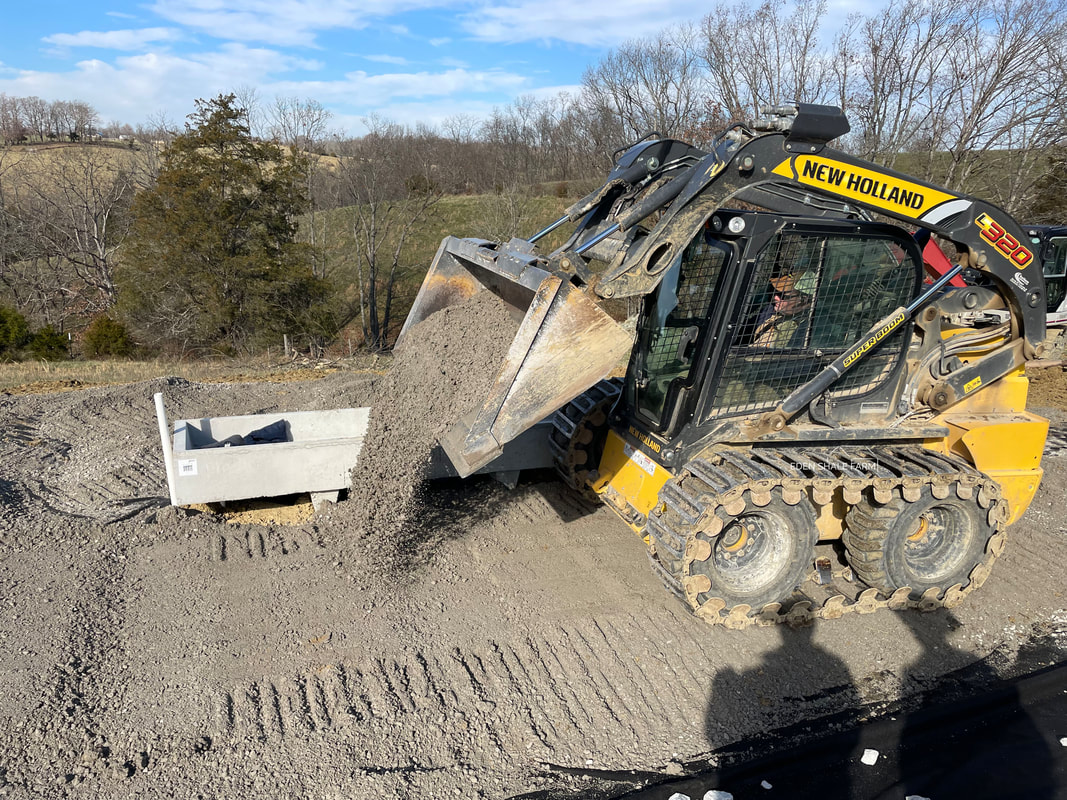|
So far in Owen County we have had two weeks of winter weather. The brutal cold and snow that everyone had in January, followed with a week of mud as all the snow was melting when it warmed back up. Other than that, it has been extremely mild this winter.
It has also been much drier than normal. During the month of February, we only received 0.9” of rainfall and March so far has only produced 0.4” of rain. While it has reduced the winter mud and it’s making calving easy, I do hold concern for the growing season and fear we may be going into it with a moisture deficit. Hopefully by the time you are reading this, things have changed for the better. Calving season is off and running at a rapid pace. The heifers started calving on Feb 11th and the cows started on Feb 20th. We crossed the halfway point (52 calves on the ground) in 22 days. This year we are running about a week early based on where we were at this same time last year. We have had good luck so far too (knock on wood). One heifer did give birth to a dead calf, but then a cow gave birth to twins, so we are still averaging 100% with a live calf. The rate at which the calves are being born will slow down now that we are reaching the end of AI sired calves. Hopefully we continue to stay a week ahead of schedule and get the calving season wrapped up early this year. See picture 1 & 2 below for a glimpse at our 2024 calf crop. The dry conditions have also been nice as it has made it easy to keep the cattle out of the mud. We feed our cows hay in four different locations throughout the winter in a sort of rotational winter feeding system. As the cattle calve, they are moved to new pastures and ultimately end up in one large field eating from the fence line feeders. This season we fed the first bale in the fence line feeder system on March 1st. This allows those new calves to have a fresh field to come into that doesn’t have any mud yet. This goes a long way into keeping the cow’s udders clean and therefore the calves healthy. We will slowly add cows to these fence line feeders until the entire mature herd and their calves are eating hay from this structure. Picture 3 of the fence line feeder on March 1, 2024. I hope you too have good luck with calving season and that you have enough hay to see you through. As for now, if you need us we will be around the calving barn. The slowest time of year for myself at Eden Shale Farm is the roughly 30 days between the end of the KCA Convention and the start of calving season in mid February. This year, that time frame was taken up by a severe cold spell. Our Mesonet station recorded ten straight days with a wind chill measuring 6° F or less (January 20th bottomed out at -16.8° F). During this time there was lots of ice to chop and plenty of hay to set out. When it is that cold, just taking care of the basic chores takes all day!
I want to give a big Thank You to our Farm Manager, Greg Cole for the long, cold days that he put in at farm when I couldn’t get there. I also want to thank our current intern, Joel, who came to help Greg every day that school was canceled during the bad weather. These two men carried the load during the harshest weather, and I appreciate them for it. 2023 was another successful forage year at Eden Shale. We were among some of the lucky few to get moisture at critical times throughout the summer and fall months. This allowed us to graze cattle until after the first of the year. This year we started feeding hay to the cow herd on January 3rd. This is on par with our average hay feeding start date which typically ranges anywhere from Christmas to the second week of January. Dr. Higgins has also had projects going on the past couple of months. There are two separate ponds on the farm that he has developed, in which the water will be filtered, stored in above ground tanks, it will flow through concrete tanks to water the cattle, and then back into the pond. These systems are summer only systems as they are above ground and they will freeze in the winter time. I will elaborate more on these systems as it warms up and we get them up and running. As I write this calving season is approaching quickly. We should start calving some where around Feb 20th plus/minus a few days. And once it starts we typically get approximately 90% on the ground in 45 days. So, if you need us in March we will be in the calving barn… |
Archives
June 2024
Categories
All
Welcome |
CONTACT US |
EMAIL SIGN UP |
|
Eden Shale Farm
245 Eden Shale Rd. Office: (859) 278-0899 Owenton, KY 40359 Fax: (859) 260-2060 © 2021 Kentucky Beef Network, LLC.. All rights reserved.
|
Receive our blog updates
|






 RSS Feed
RSS Feed
